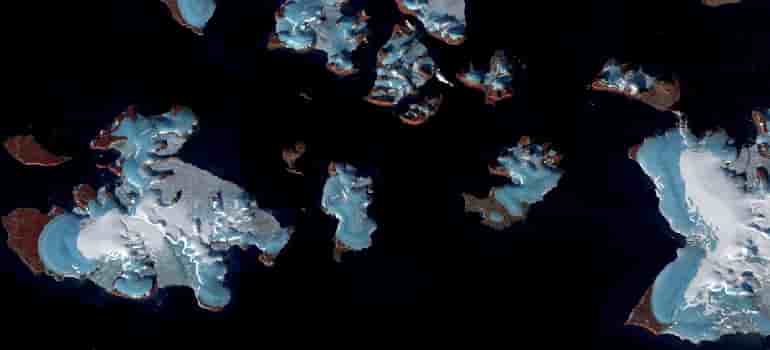A new study published in Nature Communications warns of the potential for an irreversible loss of the West Antarctic and Greenland ice sheets, which could cause a rapid acceleration of sea level rise. The study was conducted by an international team of scientists who found that this loss may be imminent if global temperature change cannot be stabilized below 1.8°C relative to preindustrial levels. This would have catastrophic consequences for coastal populations worldwide, which are already bracing for rising seas.
Planning for counter-measures to prevent inundation and other damages has been extremely difficult since the latest climate model projections presented in the 6th assessment report of the Intergovernmental Panel on Climate Change (IPCC) do not agree on how quickly the major ice sheets will respond to global warming. Melting ice sheets are potentially the largest contributor to sea level change, and historically the hardest to predict because the physics governing their behavior is notoriously complex.
To address this, the scientists developed a new computer model that captures for the first time the coupling between ice sheets, icebergs, ocean and atmosphere. This model showed that an ice sheet/sea level run-away effect can be prevented only if the world reaches net zero carbon emissions before 2060. If the emission goal is missed, the ice sheets will disintegrate and melt at an accelerated pace, according to the calculations. Retreating ice sheets would continue to increase sea level by at least 100 cm within the next 130 years, on top of other contributions such as the thermal expansion of ocean water.
Ice sheets respond to atmospheric and oceanic warming in delayed and often unpredictable ways. Previously, scientists have highlighted the importance of subsurface ocean melting as a key process, which can trigger runaway effects in the major marine-based ice sheets in Antarctica. However, the new computer simulations showed that the effectiveness of these processes may have been overestimated in recent studies. Sea ice and atmospheric circulation changes around Antarctica also play a crucial role in controlling the amount of ice sheet melting with repercussions for global sea level projections.
The study highlights the need to develop more complex earth system models, which capture the different climate components, as well as their interactions. Furthermore, new observational programs are needed to constrain the representation of physical processes in earth system models, in particular from highly active regions, such as Pine Island glacier in Antarctica. One of the key challenges in simulating ice sheets is that even small-scale processes can play a crucial role in the large-scale response of an ice sheet and for the corresponding sea-level projections. The study’s co-authors emphasize the need to simulate the dynamics at the highest possible spatial resolution using some of the fastest supercomputers to capture the coupling of all components.


